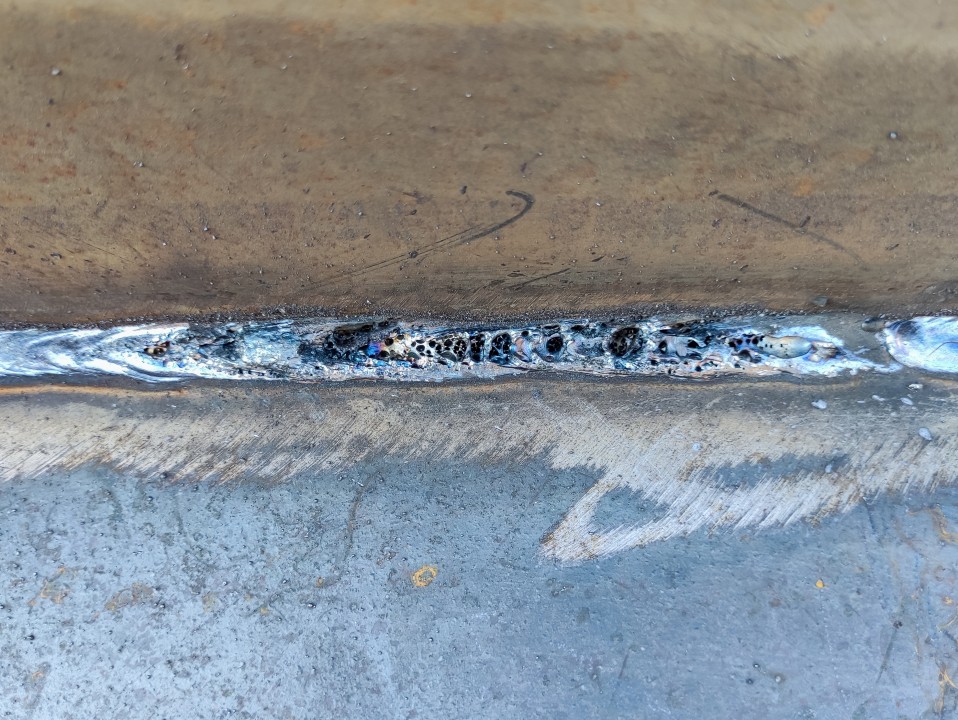What is Porosity in Welding: Usual Sources and Effective Treatments
What is Porosity in Welding: Usual Sources and Effective Treatments
Blog Article
Porosity in Welding: Identifying Common Issues and Implementing Ideal Practices for Avoidance
Porosity in welding is a prevalent problem that commonly goes undetected up until it causes significant problems with the honesty of welds. This usual flaw can jeopardize the strength and durability of bonded structures, posing safety and security threats and bring about expensive rework. By comprehending the origin of porosity and applying efficient prevention strategies, welders can significantly boost the high quality and reliability of their welds. In this conversation, we will explore the vital variables adding to porosity formation, analyze its harmful effects on weld efficiency, and talk about the best methods that can be adopted to decrease porosity incident in welding processes.
Common Reasons For Porosity

One more constant wrongdoer behind porosity is the presence of contaminants externally of the base metal, such as oil, grease, or rust. When these pollutants are not successfully gotten rid of prior to welding, they can evaporate and come to be entraped in the weld, creating defects. Furthermore, using dirty or wet filler materials can present contaminations right into the weld, adding to porosity concerns. To mitigate these common reasons of porosity, detailed cleansing of base metals, appropriate protecting gas selection, and adherence to optimal welding parameters are essential techniques in achieving high-quality, porosity-free welds.
Impact of Porosity on Weld Top Quality

The existence of porosity in welding can considerably endanger the architectural integrity and mechanical residential or commercial properties of bonded joints. Porosity produces gaps within the weld metal, weakening its general strength and load-bearing ability. These voids work as tension focus points, making the weld extra vulnerable to cracking and failure under used loads. In addition, porosity can decrease the weld's resistance to corrosion and other ecological elements, additionally decreasing its long life and efficiency.
Welds with high porosity levels tend to display reduced influence strength and reduced capability to flaw plastically prior to fracturing. Porosity can hinder the weld's capability to efficiently send pressures, leading to early weld failing and prospective safety threats in essential frameworks.
Finest Practices for Porosity Prevention
To improve the structural integrity and high quality of welded joints, what specific procedures can be implemented to lessen the event of porosity during the welding process? Using the correct welding strategy for the certain product being bonded, such as readjusting Full Article the welding angle and gun setting, can better prevent porosity. Routine evaluation of welds and instant remediation of any kind of issues determined during the welding procedure are necessary techniques to protect against porosity and create top notch welds.
Value of Correct Welding Methods
Carrying out correct welding techniques is vital in making certain the structural integrity and top quality of bonded joints, developing upon the structure of reliable porosity prevention steps. Welding techniques directly influence the total stamina and sturdiness of the welded framework. One vital element of appropriate welding methods is maintaining the right heat input. Too much warmth can lead to enhanced porosity because of the entrapment of gases in the weld swimming pool. Conversely, inadequate warm might result in insufficient combination, developing potential powerlessness in the joint. Furthermore, utilizing the suitable welding criteria, such as voltage, current, and take a trip rate, is vital for attaining sound welds with marginal porosity.
Additionally, the option of welding process, whether it be MIG, TIG, or stick welding, need to align with the certain needs of the job to make sure ideal outcomes. Correct cleansing and prep work of the base metal, in addition to choosing the ideal filler material, are likewise essential elements of competent welding strategies. By adhering to these finest practices, welders can decrease the danger of porosity development and produce high-quality, structurally audio welds.

Evaluating and Quality Assurance Measures
Quality assurance actions play an important duty in verifying the stability and reliability of bonded joints. Examining treatments are vital to find and protect against porosity in welding, making sure the toughness and sturdiness of the final item. Non-destructive screening techniques such as ultrasonic screening, radiographic testing, and aesthetic inspection are typically employed to identify prospective issues like porosity. These methods enable for the analysis of weld high quality without check my reference compromising the honesty of the joint. What is Porosity.
Carrying out pre-weld and post-weld evaluations is additionally essential in maintaining high quality control criteria. Pre-weld inspections involve More Bonuses verifying the products, devices settings, and cleanliness of the workspace to protect against contamination. Post-weld examinations, on the various other hand, assess the final weld for any defects, including porosity, and verify that it satisfies specified requirements. Applying a thorough quality assurance plan that consists of detailed testing treatments and evaluations is paramount to minimizing porosity problems and making certain the general quality of bonded joints.
Conclusion
In verdict, porosity in welding can be a typical problem that affects the high quality of welds. By identifying the typical reasons of porosity and carrying out ideal methods for avoidance, such as appropriate welding methods and testing measures, welders can guarantee top quality and dependable welds. It is important to focus on prevention approaches to minimize the occurrence of porosity and maintain the integrity of bonded frameworks.
Report this page